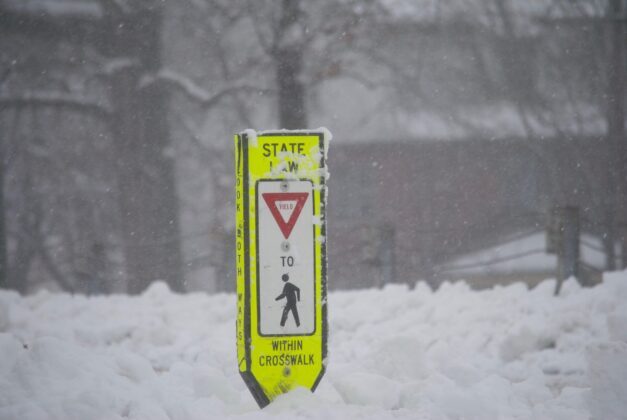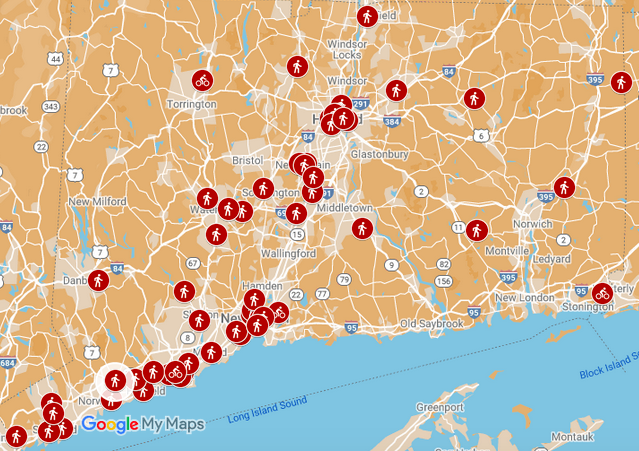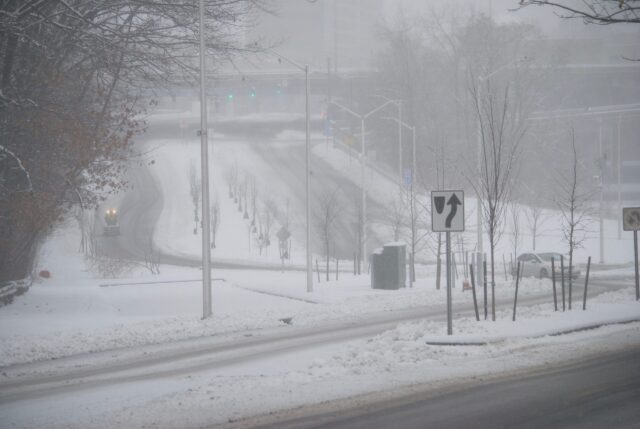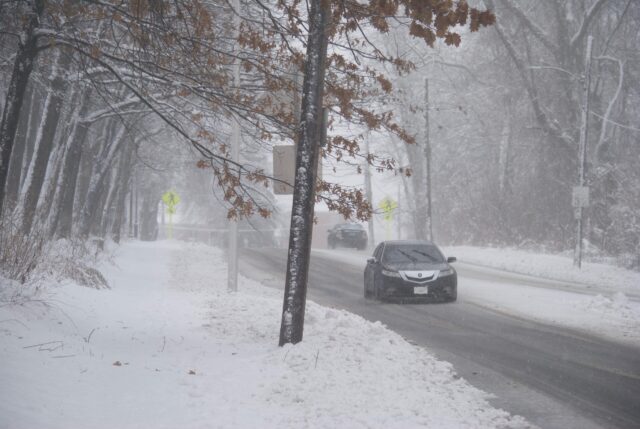At least six pedestrians were killed on Connecticut’s roadways in December 2023. All were on State routes or Interstates.
The first of these preventable deaths happened on December 5 in New Haven on I-95. Alexis Vincente, a truck driver from New Jersey, was standing outside his Freightliner in what’s called the “gore,” the triangular area between the highway’s travel lanes and the exit 46 ramp. It is currently unclear if Alexis was within the triangular area or in the far right travel lane when he was fatally injured when the driver of another tractor trailer hit him.
On December 11, a driver killed a 68-year old Charles Bach who was trying to cross Route 5/15 around 5:05 AM. The speed limit on this multi-lane road, also known as the Berlin Turnpike, is 50 MPH. There are no sidewalks. In August 2022, a 15-year old child was killed while riding his bicycle nearby.
Two fatal pedestrian collisions happened on December 19.
The first was in Stamford. At 6:50 AM the driver of a 2012 Chevy Suburban struck and killed Cesar Cabrera-Guzman, 48, of Stamford as he attempted to cross Route 137.
The exact location has not yet been described, but the pedestrian would have been tasked with crossing either four or five lanes of a road with no physical median and with lackluster sidewalks. None of the nearby marked crosswalks have pedestrian signals — walkers are asked to cross in the same direction of motor vehicles, which are permitted to make right turns on red lights. There are bicycle lanes separated by paint only. Bus stops are not near marked crosswalks. Additionally, it is unclear what kind of lighting is present in this area. At 6:50 AM, it was dark outside.
This was the 4th fatal pedestrian crash in Stamford of 2023. Cesar was at least the fifth pedestrian to be killed on Route 137 in Stamford since 2015.
Around 6 PM, the driver of a Toyota Tacoma pickup truck hit and killed Damian Mikolaj Liberda, 42, of Berlin on 65 MPH Route 9 in the same town.
About 48 hours later, a driver struck and killed Flora Legassey, 71 of Waterbury, on Route 73 in the same city. There are no sidewalks on either side of Route 73, despite the presence of bus stops. There are no marked crosswalks near the bus stops. Media images of the crime scene show a dimly lit road. The speed limit is 35 MPH. Do you need to wait for an investigation to complete, or can you say what contributed to Flora’s death?
In less than 48 hours after that, Mateo Gaviria, 28 of Bridgeport, crashed his Toyota Corolla into a concrete median on Route 15 South in Westport. He exited his vehicle, becoming a pedestrian.
The driver of a 2021 Infiniti Q50 struck the disabled Corolla; Mateo was hit and killed by either the Corolla or the Infiniti — this detail was not initially clear. It is equally unclear if this section of Route 15 has adequate breakdown lanes where a person could safely exit their vehicle following a collision or mechanical malfunction.
These are the deaths that have been reported. There were numerous other serious pedestrian crashes in December, and earlier, and unfortunately, the media tends to lose interest in a story after a couple weeks. As I continue to update the heat map of crashes from 2015-to-present, I keep encountering database entries that were not there in the months that followed. It’s frustrating on a number of levels. Here’s just one of those levels: When some stories broke, police told reporters that injuries were some version of serious, but non-fatal. Too much authority given to police by members of the media means that these stories are not followed up on. Later, the pedestrian/cyclist died from those injuries, and there was nothing about it in the news. The average person is not reading through a database; they’re getting their information from news and social media, and this is what shapes their perspective.
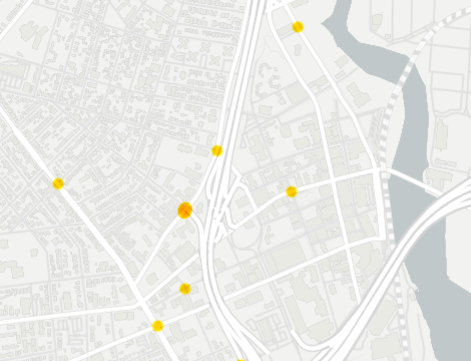
In November 2022, the driver of a Dodge Durango SUV killed an 84-year old pedestrian crossing Washington Avenue in Bridgeport, just west of the intersection with Coleman Street. I did not have this mapped until January 7, 2024 because it had never been reported — nowhere that I could find anyway. I learned about this because a safety advocate from Bridgeport sent along news that a 79-year old pedestrian hit two days earlier had died; she was using the crosswalk at Coleman Street and Washington Avenue. As I began compiling information, I searched fatal crashes in Bridgeport, and saw the one from 2022 at the same intersection. Two elders killed just over one year apart at the same intersection? I’d say there’s a problem. Part of it, I have no doubt, is that Coleman Street becomes the on ramp for Route 8, and something flips in people as they get closer to highways.
In the first week of 2024, three pedestrians have been killed in New Milford, Bridgeport, and West Hartford.
Every time I sat down to attempt to write an assessment of 2023, another pedestrian was needlessly killed.
I know what people want: a number.
How many people died in 2023?
Are things getting better or worse?
Here’s my response: More than zero pedestrians and cyclists were killed by motorists in 2023.
That’s an unacceptable number.
Was the total less than the previous year? The difference is enough that even as additional deaths likely get added to the 2023 total, it’ll remain less; but, it’s not so much of a difference that we should applaud quite yet.
Another way to think of it: should we praise politicians when too many decision-makers have done nothing? Route 10 in Hamden claimed another pedestrian’s life last year. This is an established pattern with the road. Hamden and the State of Connecticut have not responded with action to the data that they have, the data that is lives lost showing that the road design is the problem. Should I be congratulating the CT DOT along with Town of Berlin after Route 5/15 (Berlin Turnpike) claimed another pedestrian in 2023? They are aware of the issue but have shown no promise of reducing lanes or speeds, or installing continuous sidewalks. A child was killed cycling nearby on the same road in 2022. His death was not enough to prompt swift and meaningful change. Or, we could look at Route 354 in Salem where a pedestrian’s death in 2021 wasn’t enough to inspire those in charge to make safety improvements. There are no sidewalks or street lights on this 40 MPH road. Right before Halloween of 2023, the driver of a Dodge Grand Caravan SE killed a 69-year old who was walking home after volunteering at the Trunk-or-Treat event held at the fire station. Had the Town of Salem or State of Connecticut said “no more” after the previous loss of life and began to make any changes to this area, they could have saved a life.
Still, too often, we hear something to the effect of “we don’t know what has happened yet,” by both decision-makers and advocates following crashes. Investigations can take a long time and be inconclusive. It does not make sense to wait for a crash investigation to be wrapped up with a neat bow as if real life were some hour-long procedural drama. What we can all do — advocates and decision-makers alike — is use common sense, existing data, and critical thinking skills to shape responses that do not rely on “solving” a case. Too many still believe that we can resolve traffic violence by individual action, which is what the “wait for details” approach feeds into.
So, what does the alternative look like?
First, shift the mindset: we don’t obsess over the last wrong action that the driver, cyclist, or pedestrian made. That might be something for the courts, but that’s punitive.
Here’s a logic quiz:
If we know that a two-mile section of road has proven deadly again and again, do we:
(a) speculate that this has something to do with distracted drivers
(b) say the pedestrian was asking for it because of what they wore
(c) look at the design of the road where there have been repeated fatalities
Unless you enjoy wasting others’ time and continuing to risk others’ lives, the answer has to be c.
In so many cases, people were killed because there weren’t sidewalks or street lights. If you add lights in areas where people are regularly expected to be, that is going to help everyone — including motorists who can’t be bothered to turn on their headlights. This helps workers whose dress code requires dark clothing and it helps those whose cultural customs involve wearing dark pants and dark coats. It helps those who ended up staying somewhere later than expected and did not plan their whole outfit around the possibility of walking home after sunset. It helps those who don’t want to wear neon colors — and why should they? Vehicles are not manufactured only in day-glo tones. If you couldn’t even get your toddler to change out of her dinosaur jammies for preschool, what makes you think that bullying strangers into changing their clothing habits is going to ever be successful?
If you have continuous sidewalks, there’s a visual difference that a distracted driver may still notice in their peripheral vision and manage to not swerve into a pedestrian. Likewise, it’s much easier for someone to notice when they have begun stepping off of a sidewalk than when they may have strayed far into the lane while walking on a roadside shoulder.
Neither are foolproof, but if you want to see a dramatic decrease in pedestrian deaths, start with those two things. Then, reduce the physical width of most roads as funding allows.
You don’t have to wait for an investigation to finish to know that a 45 MPH multi-lane road that is missing pedestrian infrastructure and adequate street lights has something to do with why a driver killed a pedestrian there.
I bring this up because going into 2024, I will be making the ask of people to reach out to their decision-makers and demand swift, meaningful change. No more tolerance for the “thoughts and prayers” approach from government employees whose job is to make policy change. No more silly awareness campaigns. No more little shows of sending traffic police to a location for a week or two.
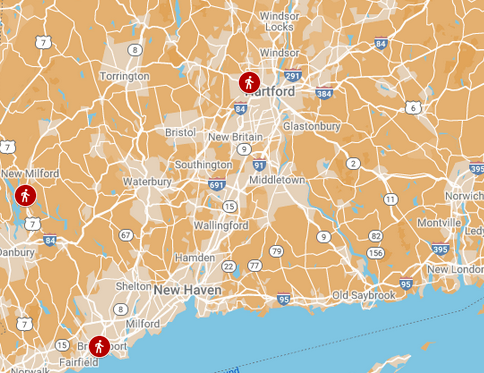
Here are three places to begin. I encourage those who either live in these towns or routinely travel in them to contact the decision-makers:
On January 4, 2024, along with the State of Connecticut and Town of New Milford, a driver killed a pedestrian who was attempting to cross Route 7/202, a car-centric stroad. The pedestrian was a 43-year old from New York.
Route 7/202 is a four-lane, 40 MPH road with no sidewalks. There is a hi-vis sign by the high school half-assedly warning motorists about the presence of pedestrians, but nothing that would actually help pedestrians stay alive. You can see from the Google Map screenshot that a path has been worn in the grass, showing that the area gets considerable pedestrian use.
There are no marked crosswalks in the area, despite the presence of bus stops, businesses, and homes that would inspire someone to cross Route 7/202. In the CT Crash Data Repository, this stretch of road was described as lacking street lights in recent years. This fatal crash occurred around 6:45 PM.
Since 2015, every pedestrian/cyclist who has been killed in New Milford died on Route 7. That’s the loss of six people walking and one person cycling. There have been no safety improvements made to this road. Contact the Mayor of New Milford and demand meaningful safety improvements, now:
Mayor@newmilford.org or 860-355-6010.
On January 5, 2024 A driver killed a 79-yr old pedestrian in Bridgeport when she was crossing Coleman Street in the marked crosswalk at approximately 8 AM. Just over one year prior, a driver killed another elderly pedestrian on the west side of the intersection.
Contact Bridgeport’s Planner to demand safety improvements for this intersection: Cathy.Fletcher@bridgeportct.gov
On January 6, 2024 a driver killed a pedestrian in West Hartford on Route 44 at/near Mohegan Drive at 5:45 PM, when it was dark, but before the snow began.
This is near multiple synagogues on Route 44 that people walk to on Fridays and Saturdays, and there are bus stops in the area, along with numerous homes. Yet, the Town of West Hartford and State of Connecticut do not treat this area as if those walking should be kept safe. We know this because of how Route 44 looks.
To cross 40 MPH Route 44 in this area, a pedestrian has to walk across four lanes of traffic. There is a marked crosswalk on one leg of the intersection at Mohegan Drive, but motorists on that side street are permitted to turn right on red, which means pedestrians never truly have anything like safety at this intersection.
The bus stops are not aligned with the marked crosswalk near Mohegan. Not all side streets have marked crosswalks in the area. The closest marked crosswalk west of Mohegan Drive is at the intersection with Trout Brook Drive, a six minute walk. The closest marked crosswalk east of Mohegan Drive is the intersection with Steele Road, a twelve minute walk with disappearing sidewalk.
For someone trying to cross Mohegan Drive at the intersection, there is a marked crosswalk but no pedestrian signal, so they have to contend with drivers making quick turns off Route 44.
In 2020, a driver killed a pedestrian who was skateboarding home from work on Route 44 in the roadway, presumably because there was no sidewalk in the vicinity of Bainton Road; since that crash, sidewalk on the other side of the road was redone, but nothing was added to the south side, showing a lack of commitment and care by the Town of West Hartford.
Despite local advocacy, the Town of West Hartford’s decision-makers have made no quick builds or taken any other swift, meaningful actions to improve street safety at any of the sites where pedestrians/cyclists have been killed in recent years. They have drafted a plan to have safety audits and roll out bumper stickers to raise awareness about distracted driving.
Send the Town of West Hartford a list of demands for safer streets now.
Contact the Town Manager: 860-561-7440
Contact the Town Engineer: 860-561-7543
Contact the Director of Public Works: 860-561-8100
Contact the Mayor’s Office: 860-561-7440
For West Hartford and New Milford, also contact the CTDOT Commissioner’s Office and demand that they follow their own Complete Streets directive: (860) 594-3000 as both crashes happened on state routes.
